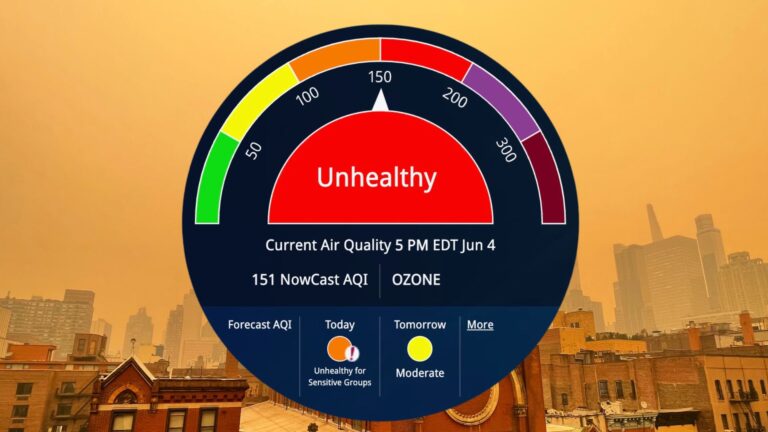Just one year ago this week, wildfires in Canada blanketed the skies of Hell's Kitchen in orange haze. Yesterday, air quality warnings were issued even though there was barely any sign of haze above the neighborhood. Here's what's happening in New York City skies.

The main pollutant in yesterday's alert was ground-level ozone, which comes mainly from vehicle and industrial exhaust fumes. This type of air pollution is more prevalent in the summer months due to a combination of heat and sunlight.
The air quality index on Tuesday afternoon hit 151, putting it in the “unhealthy” range of 150 to 200, according to AirNow. Sensitive groups, including asthma sufferers, children and teens, seniors and anyone who is outdoors for more than six hours a day, are urged to take precautions to reduce exposure.

While we haven't seen the orange hue of last year's fires, ozone can cause a variety of health problems, including lung inflammation and irritation, asthma attacks, wheezing, coughing and increased susceptibility to respiratory illnesses. Everyone should limit their exposure by avoiding strenuous outdoor activities.
Increased wildfire activity is expected across Canada, with large, widespread fires likely to periodically affect air quality in the northern U.S., according to AccuWeather.
Later this month, Hell's Kitchen will see the implementation of congestion pricing, one of the biggest transportation experiments in American history. The hope for many is to reduce the number of cars below 60th Street and ease traffic congestion around the Lincoln Tunnel.
Longer term, there are plans to power mega-cruise ships docked at the Manhattan Cruise Terminal on the Hudson River, but the New York City Economic Development Corporation, which runs the terminal, is currently aiming for 2028.



